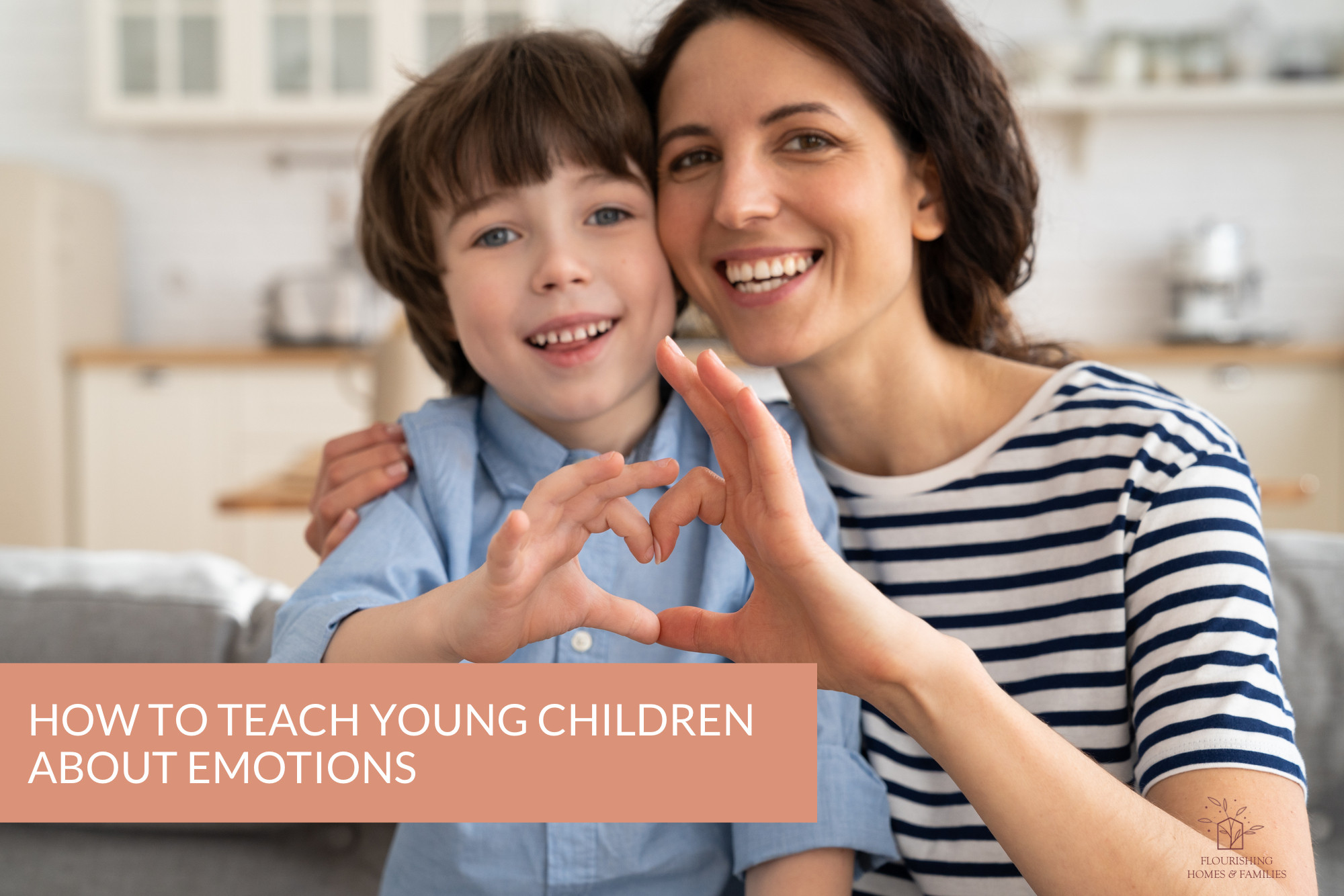
Emotions are an integral part of the human experience, and helping young children understand their emotions is an important part of parenting! By equipping them with emotional intelligence early on, we empower them to navigate life's ups and downs more effectively.
Parenting as a Peacemaker means we look first to Jesus. As both fully God and fully human, He experienced the full range of human emotion. From joy and delight to frustration and anger, from compassion and empathy to grief and anxiety, Jesus reveals to us that emotions are natural, neutral, and necessary.
Why Teach Children About Emotions?
Emotional Regulation: Teaching children to recognize and understand their emotions helps them learn how to manage and regulate them. This skill is essential for maintaining healthy relationships, making thoughtful decisions, and coping with stress.
Improved Communication: When children can express their feelings effectively, it enhances communication with peers and adults. They can better articulate their needs and concerns, reducing frustration and misunderstandings. This also helps mitigate emotional outbursts that become physical.
Empathy: Understanding their emotions also fosters empathy, as children become more attuned to the feelings of others. Empathetic children are more likely to build strong, positive relationships and contribute positively to their communities. Remember, this is something that grows and matures over many years, and is largely dependent on brain development!
Conflict Resolution: Emotional awareness equips children with the tools to resolve conflicts peacefully. They can identify the emotions driving a disagreement and work towards finding solutions that address everyone's needs and concerns.
Practical Activities to Teach Children About Emotions
The Emotion Thermometer: Use a thermometer to help children gauge the intensity of their emotions. This visual aid makes discussing emotions easier and more concrete. Encourage them to point to the temperature that matches how they feel, from icy-cold (calm) to blazing-hot (angry).

Emotion Charades: Play emotion charades by acting out various emotions without using words. This fun game helps children recognize and express emotions through body language and facial expressions.
Feelings Faces Art: Create a "Feeling Faces" art project. Provide magazines or printouts of different facial expressions and ask children to make a collage of various emotions. This activity encourages discussion about emotions while being creative.
Feelings Flashcards: Craft a set of emotion flashcards with pictures depicting different emotions. Show these cards to children, ask them to identify the emotion, and share a time when they felt that way. This helps them connect emotions to their own experiences.
Books + Stores Read books with emotional themes together. After each story, discuss how the characters felt and why. Encourage children to relate the emotions in the book to their own experiences and feelings.

Teaching children about emotions is a sacred journey of nurturing their hearts and souls. It's an opportunity to help them develop not just emotional intelligence but also a deeper understanding of themselves and their place in the world. Just as Jesus embraced and understood the emotions of those He touched, we can guide our children toward emotional maturity with a gentle, Jesus-centered spirit. By doing so, we provide them with a strong foundation for emotional well-being and for living out the teachings of Christ in their daily lives.
In nurturing a child's emotional intelligence, we equip them to better serve others, build lasting relationships, and walk in the light of God's love.












0 Comments